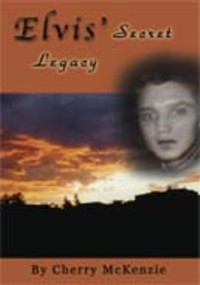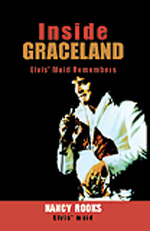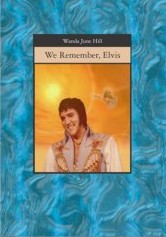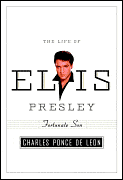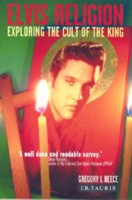 |
 |

Reviewed by Susan MacDougall, March 2008 McKenzie, Cherry. Elvis' secret legacy. Author House, Bloomington, IN., 2006. 158 pp. Pbk. ISBN: 1-4259-4114-1.
Without giving too much away, Elvis appears to Kat/Kitty McBride to enlist her help in retrieving a secret legacy from a barn at Graceland. Kat involves a friend with the unlikely name of Posey Street; they team up with Early May Pruitt, former assistant to Doc. Belle, the horse vet at Graceland whose successor, Dr Todd Ledbetter, has been forced into certain actions by gambling debts connecting with dog racing. The three women fortuitously team up with elderly real estate agent Miss Maple Melton who conveniently has access to a vacant yet partly furnished property backing onto Graceland. That sets the scene for what follows. Tension between the women (the "goodies") comes from Posey Street's scepticism and sarcasm and Early May Pruitt's belligerent reactions. Tension between the men (the "baddies") comes from interaction between psychopath Tony and Herc(ules), basically kind, who takes a liking to Pruitt - he likes large, pretty women - and protects her from harm. Initially, Posey is unable to see or hear Elvis. She has to tune in to him via the radio. He can be both seen and heard on a television screen. After a tornado induced by Elvis himself to drown out the noise of concrete being broken by a jackhammer, he appears to them all on television because the storm has dissipated his spiritual energy. When they have trouble contacting him, the women use a Ouija Board. The question "Where is Elvis" results with the response "Elvis is everywhere" - definitely seriously scattered! This is followed by a séance. While Elvis doesn't appear to the men, he scares them with poltergeist-type activities. This is another book by an author claiming a real-life connection to Elvis. According to her short biography, McKenzie sat near Elvis in Miss Helen Lockrie's Speech and Drama Class at Humes High School in the second semester of her sophomore year. She would have been a year behind Elvis, having been born in September 1936. She claims to have been invited by Elvis to the 1952 junior/senior prom and went out with him twice. The front cover contains a fuzzy photograph, purportedly of Elvis, the same photograph as on the last page of the book. The photograph looks suspiciously as though it has been reworked on a computer. For McBride, read McKenzie - there is what could be construed as autobiographical content. Chapter 4 covers reminiscences about the invitation to the 1952 school prom, where Elvis avoided fast dances, not knowing the right steps. When relating the story to friend Posey in Chapter 8, the suggestion is that Kat "did it for the first time" with Elvis in 1952. Fact or wishful thinking? According to Brown & Broeske (Down at the End of Lonely Street, Signet, 1998, p. 53), Elvis confided in later life to a girlfriend that he lost his virginity around the time of his high school graduation (in mid 1953), so later than 1952 as suggested by McKenzie. McKenzie's name doesn't appear in Guralnick & Jorgensen's Elvis Day by Day (Ballantine, NY, 1999), Guralnick's The Last Train To Memphis (Little, Brown & Co., 1994) or Bill E. Burk's Early Elvis: the Humes years (Red Oak Press, Memphis, 1990). Those books are fairly sparse on detail for that era, as are others. But Guralnick does name girlfriends Billie Wardlaw (1952) and Regis Vaughan (1953). Elvis took Regis Vaughan to the senior prom at the end of the school year in 1953. They didn't dance because Elvis said he didn't know how to. According to Cherry McKenzie he wouldn't do the fast dances in 1952, presumably managing the slow ones. So there are several discrepancies in McKenzie's story. The Humes High School Class of 1954 might shed some light on her existence if we could check it out. Despite that, the major attraction of this book is Elvis's characterisation. He is depicted as being full of teasing good humour and kindliness, although with a serious purpose. No Elvis fan could really take umbrage at that. There is so much already to read about Elvis that I don't usually bother with Elvis fiction. But in this case, Elvis' Secret Legacy is light, easy, and above all, enjoyable reading, however dubious Cherry McKenzie's credentials are. Read other book reviews by Susan MacDougall:
|
|
